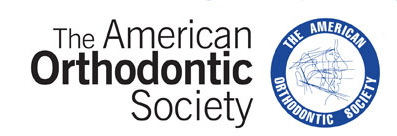Invisalign® and traditional braces are two of the more common methods of orthodontic treatment. Each option offers unique benefits, and one may be preferable to another in certain situations. This review offers insights into how Invisalign and traditional braces compare to one another and how to choose the best option for you.
A review of Invisalign® vs. traditional braces
Invisalign and traditional braces are ideal for anyone looking to improve their smile through orthodontic treatment. There are many similarities to both and they often achieve the same goal (a straighter, more attractive smile), although there are some notable differences to be aware of as well.
What is Invisalign®?
Invisalign is a method of teeth straightening that uses clear aligners to gradually shift teeth into better alignment. Invisalign mostly addresses issues of mild to moderate misalignments, including crooked teeth, crowded teeth, teeth gaps and bite misalignments. Invisalign aligners are removable and customized for the patient. New aligners are given several times a month as teeth move into the ideal alignment. Perhaps the most notable benefit of Invisalign treatment is the discreet nature of the transparent aligners.
What are traditional braces?
Traditional braces involve metal brackets that are attached to the visible surface of teeth. A wire runs through each bracket and tightened by the dentist. They then work in a similar way as Invisalign, pulling and pushing on misaligned teeth until the proper alignment is achieved. They are not removable, and the dentist periodically adjusts the brackets as teeth shift. Traditional braces are often more appropriate for moderate to severe malocclusions, although patients with minor alignment concerns may also benefit from traditional braces treatment.
How are they different?
Invisalign and traditional braces both move teeth to the proper alignment. However, there are key differences between the two. As discussed, Invisalign aligners are removable, whereas traditional braces can only be removed by the dentist, which is typically only done at the very end of treatment. Also, Invisalign offers a transparent appearance and others around are not likely to notice they are being worn. Traditional braces are, however, able to correct more severe malocclusions and teeth spacing and alignment concerns, whereas Invisalign is not always an option for severe cases.
Which option is best for me?
The best treatment option for you depends on your personal preference and the specific orthodontic concern you wish to address. For patients who are not concerned with the visible appearance of braces or patients who have a more severe misalignment, braces may be the best option. For patients who want a discreet treatment option that is effective, convenient and can be removed while eating and during oral care, then Invisalign may be the more appropriate solution.
Invisalign® for a straighter smile
You can find out more information about Invisalign and traditional braces and decide which one is best for you by arranging a convenient visit with our dental team. We are happy to address your questions and provide you with more information about orthodontic treatment for a better and straighter smile.
Request an appointment here: https://dentisthouston4smile.com or call Smile Designers at (281) 947-0551 for an appointment in our Houston office.
Check out what others are saying about our dental services on Yelp: Invisalign in Houston, TX.
Related Posts
Top 15 Reasons to Get Clear Braces From Smile Designers
There are many reasons to get clear braces. They are a convenient way to straighten your teeth, and Smile Designers recommends this solution for anyone that is tired of having a crooked or unattractive smile. …
Orthodontic Treatment Can Make Daily Hygiene More Effective
Orthodontic treatment refers to a number of procedures and treatments; however, when it comes to more effective oral hygiene, most dentists say that it can improve with the help of teeth straightening …
3 Oral Health Tips From A Children's Dentist
As a parent, it is your job to protect all aspects of your child’s health. A children’s dentist can help you establish good dental habits early on in life so your child …
A Restorative Dentist Can Save Teeth
Need a restorative dentist? Do you have an awkward smile? Have you been told by friends and family that your teeth need some attention? If so, don't worry! Many dentists can help. …






